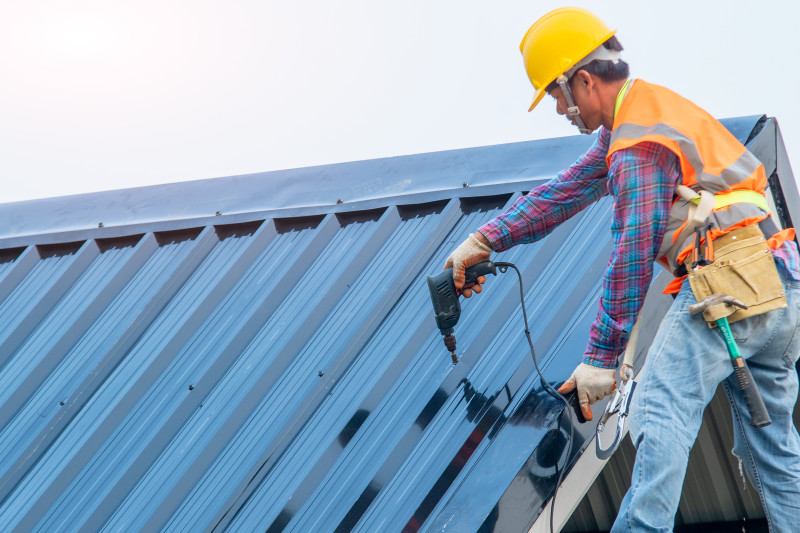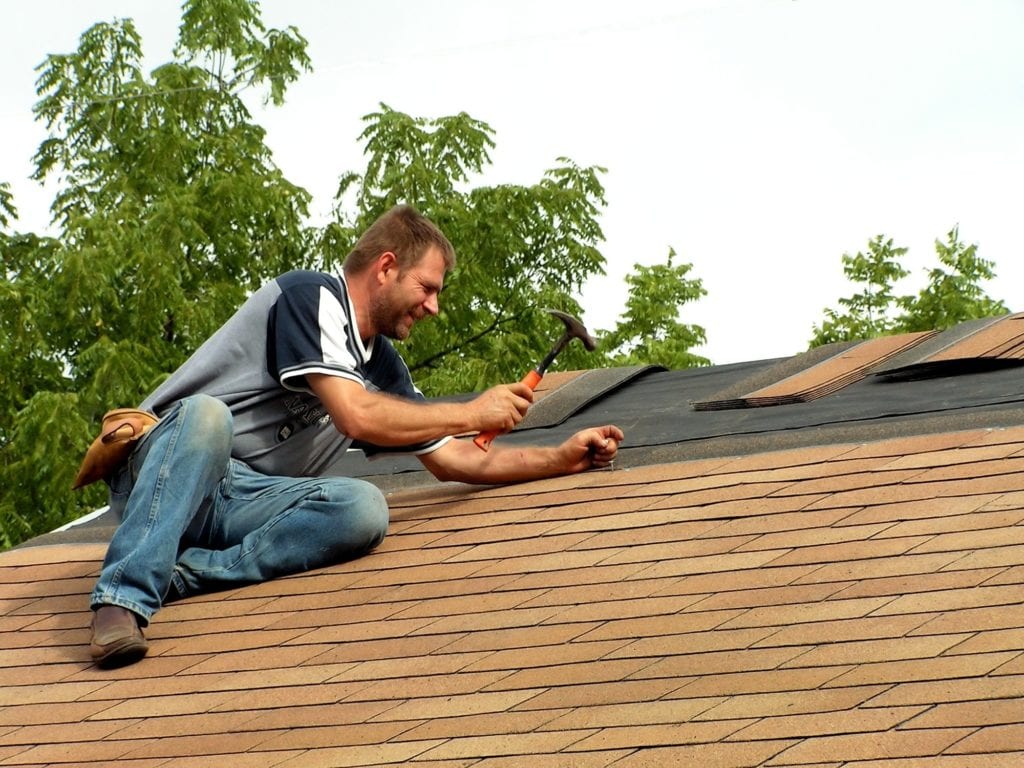Just How to Identify Indications That Common Roof Covering Repair Is Needed on Your Building
Determining signs that common roof fixing is required on your residential property is vital for preserving the integrity of your home. Regular examinations can expose subtle indicators, such as missing out on or damaged shingles and the visibility of granules in rain gutters, which may recommend damage.
Missing Out On or Damaged Shingles
Among the most noticeable signs of potential roof covering problems is the presence of missing out on or damaged shingles. These components work as the initial line of protection against the aspects, and their integrity is critical for preserving the overall health and wellness of a roofing system. When tiles are missing, fractured, or curled, it reveals the underlying layers of the roofing system to dampness and environmental damages, resulting in extra severe difficulties in time.

It is crucial to carry out regular evaluations, specifically after severe weather condition events such as storms or hail storm. Homeowners must seek signs of deterioration, including staining, granule loss, or visible wear along the sides of the tiles. Furthermore, the visibility of busted or warped tiles can disrupt the visual appeal of a residential or commercial property and might signify an immediate demand for repairs.

Leakages and Water Spots

Identifying leaks and water stains is crucial for preserving the stability of a roofing system. These signs typically indicate underlying issues that, if left unaddressed, can lead to significant architectural damages and expensive repair services. Water spots usually look like stained patches on ceilings or wall surfaces, usually with a yellow or brownish color, suggesting that moisture has actually passed through the roof material.
To effectively assess for leakages, examine both the interior and outside of your building. Inside, try to find any kind of indications of water damage, such as drooping ceilings or peeling off paint. Outdoors, take a look at the roofing system for missing out on roof shingles, damaged blinking, or any type of penetrations where water might infiltrate. Pay attention to locations around vents, chimneys, and skylights, as these prevail sources of leakages.
Additionally, examine your attic for proof of moisture or mold and mildew growth, which can additionally indicate roof covering leaks. If you observe persistent leakages or water discolorations, it may be smart to get in touch with an expert roofer. Early recognition and prompt repair work of leakages can help protect the life-span of your roofing system and stop more substantial damages.
Moss and Algae Growth
Moss and algae development on a roof covering can considerably jeopardize its efficiency and longevity. These organisms prosper in wet, shaded areas, visit the website typically bring about a series of problems if left uncontrolled. Moss, specifically, can keep wetness versus roof covering products, which can add to the deterioration of roof shingles and underlayment. Gradually, this dampness retention can bring about timber rot and mold growth, potentially resulting in expensive repair services.
Algae, on the other hand, primarily shows up as dark touches on the roofing surface. While it may not create prompt architectural damage, algae can indicate underlying problems such as entraped wetness. Additionally, the presence of algae can lessen the visual charm of a building and may decrease its market worth.
To deal with moss and algae growth, it is important to do regular roof covering assessments, particularly after durations of heavy rains. Professional cleansing services can securely remove these microorganisms using specialized techniques that do not damage roof products. Preventative steps, such as ensuring appropriate water drainage and trimming looming branches, can also alleviate future growth. By preserving a tidy roofing system, homeowner can expand the lifespan of their roof system and maintain their investment.
Drooping Roofing System Deck
The visibility of moss and algae on a roof can indicate underlying problems that may bring about more major issues, such as a drooping roof covering deck. honolulu roofing. A drooping roof deck is a sign of structural weakness and ought to be attended to immediately to avoid more damages. This problem often occurs from prolonged wetness exposure, which can compromise the supporting structures, including rafters and trusses
To identify a sagging roof deck, inspect the roof go to this site from both the exterior and inside. Look for noticeable dips or depressions in the roof surface area, along with indicators of water damages, such as discolored ceilings or walls. Interior examinations may expose a bowing look in the roofline or cracks in the drywall.
Another vital facet to observe is the placement of roof functions, such as chimneys and vents. If these components show up misaligned, it may indicate that the roof covering deck is changing.
If you find any type of signs of drooping, it is necessary to seek recommended you read advice from a qualified roofing specialist. They can examine the extent of the damages and suggest necessary fixings to bring back the roofing system's architectural stability, guaranteeing the safety and security and durability of your home.
Granules in Gutters
In the middle of routine roof covering maintenance, uncovering granules in rain gutters can offer as an essential indication of foreshadowing roof covering problems. Roof covering granules are the protective layer on asphalt tiles, developed to secure them from UV rays and weather damages. With time, exposure to the components can cause these granules to loosen and remove, resulting in substantial deterioration of the roof product.
The presence of granules in rain gutters usually indicates that your roof shingles are nearing completion of their lifespan or have experienced damages from severe weather condition problems. If you see a significant accumulation of granules, it is vital to explore further. Examine your roofing for indicators of bald spots or discoloration, which can suggest that the tiles are falling short.
Additionally, think about the capacity for water infiltration. As tiles shed their granules, they come to be more vulnerable to leaks, resulting in expensive indoor damages. Normal examinations and punctual repairs can help mitigate these risks. If you regularly discover granules in your rain gutters, seek advice from a roof covering professional to assess the condition of your roofing system and figure out if repair services or a substitute are needed. Early intervention can save you money and time in the future.
Conclusion
In conclusion, normal assessments of roof materials are crucial for determining signs that usual roofing repair work may be needed. Observing missing or harmed roof shingles, water stains, and moss or algae development can indicate underlying concerns that need attention. Signs of a sagging roof deck and the existence of granules in seamless gutters ought to not be forgotten, as these elements may contribute to considerable deterioration and expensive fixings. Proactive analysis can reduce possible damages and extend the life expectancy of the roof.